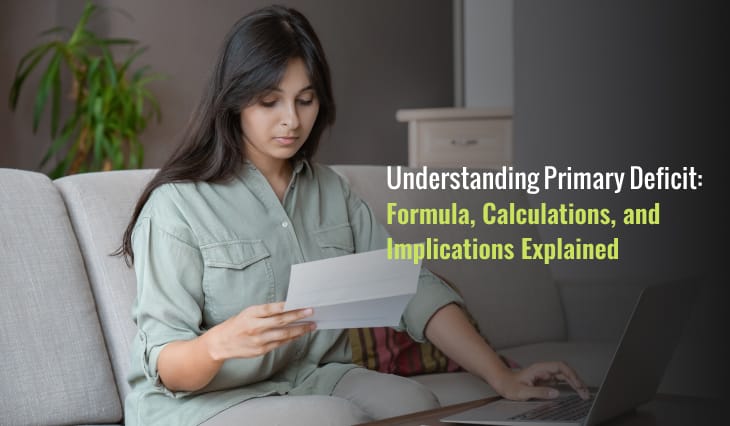CGTMSE Scheme

Last Updated : Dec. 1, 2022, 3:40 p.m.
To encourage the flow of institutional credit to micro and small enterprises, the Ministry of Micro, Small & Medium Enterprises (MSME), the Government of India, and the Small Industries Development Bank of India (SIDBI) jointly established the Credit Guarantee Fund Trust for Micro and Small Enterprises (CGTMSEs). It was launched on 30th August 2000.
The Credit Guarantee Scheme (CGS) was introduced to improve how credit is delivered and to simplify the process through which the credit reaches the MSE sector. Moreover, it gives underprivileged and unserved people access to capital and increases the availability of capital from traditional lenders to new generations of business owners.
The cgtmse program, therefore, focuses on giving loans to first-generation business owners so they may thrive in a cutthroat economy without the encumbrance of collateral or third-party guarantees.
SMEs and MSMEs are the backbones of the Indian economy. The primary goal of cgtmse is to assist first-time entrepreneurs in developing them by making use of collateral-free loans from qualified financial institutions. The guarantee protects against the borrower’s failure to pay back the credit.
Let’s go into more depth about a few parts of the CGTMSE scheme.
Features of CGTMSE
Under this scheme, new small enterprises are encouraged to submit applications for the CGTMSE loan. If borrowers default on their debts, financial institutions will be paid (up to a specific level) under the system.
The schemes constitute the following features:
- One of the main aims of cgtmse coverage is to develop a robust loan relief system that enables an increased flow of credit to SMEs and the MSME sector.
- Interest Rates : According to RBI regulations, interest rates are qualified for coverage through CGTMSE.
- Guarantee coverage ranges from 75% to 85%. Retail activity receives 50% coverage.
- For Micro and Small Enterprises, loan facilities up to Rs. 200 lakhs can be covered on an outstanding basis, whereas for RRBs and certain Fls are eligible for credit facilities up to Rs. 50 lakh.
- Manufacturing, services, and retail commerce are all eligible. Agriculture and Self – help groups are not eligible for coverage.
- More than 100 Member Lending Institutions (MLIs): PSUs, private banks , RRBs, FLs, foreign banks, SFBs, SUCBs, and NBFCs are all examples of PSUs.
Now, we have understood cgtmse schemes and their features. Let us move forward to learn what is the eligibility criteria for CGTMSE Scheme
CGTMSE Eligibility
Under the initiative, member lending institutions, which may also be NBFCs, that lend to both the SME and MSME sectors are eligible for a maximum credit ceiling of Rs. 2 crores, which is intended to cover a significant percentage of the loan amount. The qualifying requirements for both lending institutions and borrowers are as follows:
Lending Institutions
All scheduled commercial banks, selected Regional Rural Banks, SIDBI, NSIC, NEDFi, SFB, and NBFCs that lend to the relevant sector have entered into a lending arrangement with cgtmse or the Trust. These are known as Member Lending Institutions (MLIs), and there are currently 131 of them.
Lending Borrowers
All new and current SMEs are eligible for cgtmse coverage:
- For a guarantee cover of up to Rs. 65 lakhs, the maximum credit facility is Rs.50 lakhs.
- The guaranteed maximum for loan facilities above Rs.50 lakhs is Rs.1 crore.
- Term credit for the total outstanding amount on the day the loan is deemed an NPA or when a suit is filed.
Exclusions
Certain organizations are not supported by the cgtmse . These are as follows:
- Retail Trade
- Educational establishments
- Agriculture
- Self-Help Organisations (SHG)
- Institutes of Training
AGF Structure – Standard rate (SR)
An AGF or Annual Guarantee Fee would be charged on the outstanding loan amount rather than the guaranteed amount for credit facilities approved to encourage borrowers for a decent repayment track record.
Credit facilities
Annual Guarantee Fee (AGF) [% p.a.] *
Women, Micro Enterprises, and Units covered in North East Region
Others
Up to ₹5 Lakhs
1.00 + Risk Premium as per extant guidelines of the Trust
Above ₹5 Lakhs and up to ₹50 Lakhs
1.35 + Risk Premium as per extant guidelines of the Trust
1.50 + Risk Premium as per extant guidelines of the Trust
Above ₹50 Lakhs and up to ₹200 Lakhs
1.80 + Risk Premium as per extant guidelines of the Trust
Retail Trade/ Wholesale Trade (up to ₹ 100 Lakh)
2.00+Risk Premium as per extant guidelines of the Trust
*AGF will be levied on the guaranteed amount for the initial year, as well as on the outstanding amount for the remainder of the credit facility’s tenure.
Coverage under cgtmse
CGTMSE has launched a new “Hybrid Security” solution that guarantees coverage for the amount of the credit facility not covered by collateral security. The partial collateral security model allows MLIs to secure collateral security for a portion of the loan, while the remaining portion of the agreement, up to a maximum of 200 lakh, can be guaranteed mostly by CGTMSE Credit Guarantee Scheme. It tries to reassure lenders that if an MSE unit that received collateral-free credit fails to fulfil its responsibilities to the lender, the Guarantee Trust will make the lender’s loss up to 50 to 85 percent of the credit capacity.
FAQs
1. What does cgtmse stand for?
The CGTMSE stands for Credit Guarantee Fund Trust for Micro and Small Enterprises, it offers assistance to financial institutions to support SMEs and MSMEs in availing credit or loan services.
2. Is obtaining an Income Tax Permanent Account Number (IT-PAN) necessary to qualify as a borrower?
Before requesting a loan from an authorized lending institution under the Guarantee Scheme, a borrower must get an IT PAN number . Additionally, sections 139A(5) and 272(C) of the I.T. Act 1961 render it compulsory to mention the IT PAN on all tax-related documents, such as returns, challans, appeals, etc.
3. Will cgtmse levy a guarantee fee under the Scheme?
1.50% per year on the guaranteed amount outstanding.
4. Is there going to be a service charge or any other fee in addition to the guarantee fee?
No, there are no service fees or other charges.
Best Offers For You!
Credit Card by Top Banks
- SBI Credit Card
- SBI Unnati Card
- HDFC Credit Card
- ICICI Credit Card
- Axis Bank Credit Card
- YES Bank Credit Card
- Bank of Baroda Credit Card
- Bank of India Credit Card
- HSBC Credit Card
- IDBI Bank Credit Card
- IndusInd Bank Credit Card
- Kisan Credit Card
- Kotak Credit Card
- Standard Chartered Bank Credit Card
- RBL Bank Credit Card




